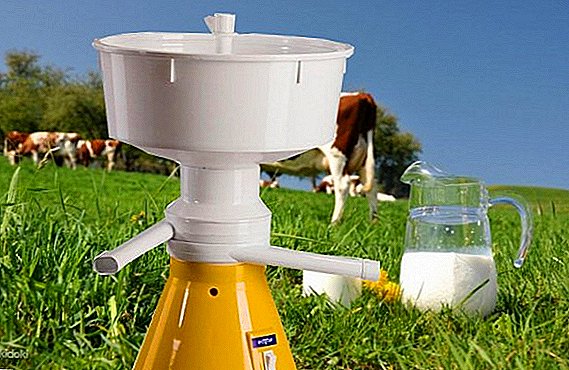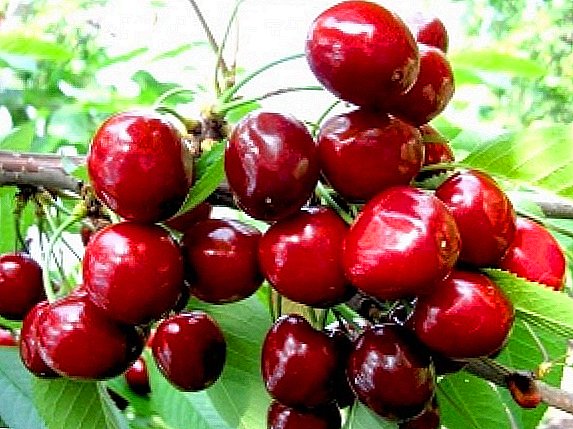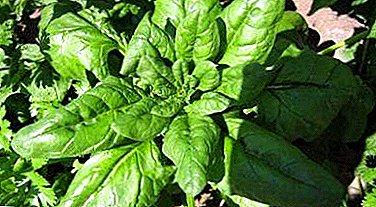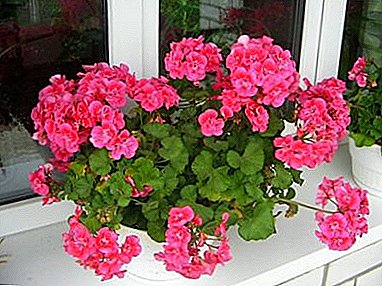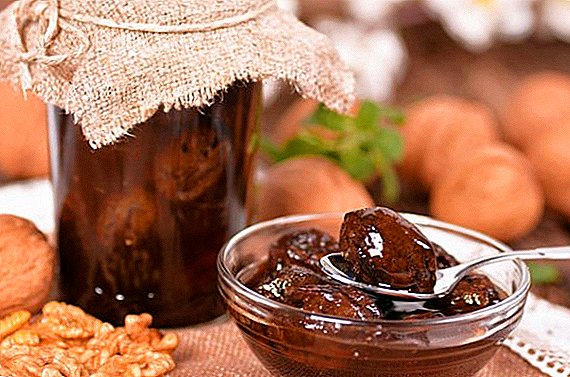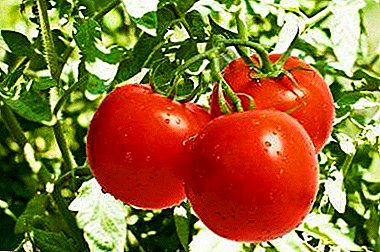
Tomatoes are a vegetable crop that came to us from warm countries. This vegetable is not only extremely tasty, but also a rich source of vitamins and nutrients. Both adults and children love it, and its plus is that it is possible to cook first, second courses and salads from it, as well as to make preparations for the winter.
In Europe, tomatoes were primarily as ornamental plants. In hot climates, sun-loving plants do not require careful maintenance. But in the north they are grown very scrupulously.
Creating optimal conditions at different stages of growth
Agrotechnical methods of growing tomatoes are similar to the cultivation of peppers - plant them better in chernozem, but in the early stages of development will require a nutrient substrate. In detail about the popular ready-made mixtures for seedlings of tomatoes and peppers, we told here.
It depends on what kind of soil is chosen for tomato seedlings, not only the quantity but also the quality of the future crop will depend. The soil for tomatoes should be loose, light, good to pass air and moisture.
Seedling
The soil for tomato seedlings should be light and loose.well permeable to water. This can be done by adding peat and sawdust.
 A good seedling develops in a coconut substrate. Chopped coconut fiber is rich in nutrients and seedlings grow strong in such conditions. When watering sprouts can start to rot.
A good seedling develops in a coconut substrate. Chopped coconut fiber is rich in nutrients and seedlings grow strong in such conditions. When watering sprouts can start to rot.
The roots of young plants can only absorb salts dissolved in soil solution. Nutrients that are contained in the undecomposed organic matter and soil minerals are not available to them. Young plants should be fed continuously and gradually..
Doses of nutrients suitable for adult vegetable crops are destructive for them. It is desirable to use a moderately fertile soil, and then, in the process of growth constantly feed the plants.
Clay should not be present in the soil mixture. Organic materials should not decompose or heat up quickly. When the temperature of the soil is more than 30 degrees Celsius, the roots begin to die off.
More about what kind of soil is better to use for seedlings of tomatoes, as well as what additives can not be added to the soil, read here.
Adult plants
Obese (rich in elemental content) soil is good for adult plants. When the plant is prepared for planting in open ground, it should be made of organic fertilizer (ash, humus, urea). Fertilization, after the tomato has taken root, not only provides the necessary nutrition, but also enriches the soil and the air above it with carbon dioxide.
Where do you need to plant tomatoes for a good harvest?
High-quality earth mixture determines abundant fruiting. If it is not good enough, the tomatoes will be sick and weak.
You can not just use the land of the garden or the soil of the greenhouse, this is very likely nothing happens. The best soil for tomato seedlings is prepared from several components that require appropriate preparation.
Tomatoes have a branched surface root system, 70% of which consists of suction roots. Such the structure of tomatoes provides the ground part of the plant with the necessary moisture and nutrients.
Preparation of beds
 The land should contain all the necessary components for growing tomatoes. Soil for tomatoes for their proper growth should contain the following elements:
The land should contain all the necessary components for growing tomatoes. Soil for tomatoes for their proper growth should contain the following elements:
- nitrogen;
- phosphorus;
- potassium.
These minerals must be easily digestible.. In a certain part of the greenhouse soil should consist of sand, as it is necessary for the development of the skeletal part of the plant.
The soil should be loose, as the roots on the surface do not tolerate excessive moisture and grow only in the loose substance, extracting nutrients from a larger area.
In the presence of such characteristics as water permeability and water capacity, the soil retains moisture well, but does not become swampy. Also, for a comfortable growth of tomatoes required heat capacity.
In addition, when preparing the soil, it should be as neutral as possible from infections and free from pest larvae. The soil should not contain weed seeds.
What acidity should be the soil?
Tomatoes need soil with an acidity of 6.2 to 6.8 pH. To determine the acidity of the soil used a set of indicator tests (litmus paper). They are sold in specialized stores.
Advantages and disadvantages of homemade mixes
The advantages of homemade soil:
- You can cook according to the exact recipe and keep the exact number of trace elements you need.
- Cost savings.
Disadvantages:
- Great cooking time.
- You need to accurately follow the recipe.
- The soil may be contaminated.
- Finding and buying the right components to remove can take a lot of time and money.
Pros and cons of purchased land
 Not everyone has the opportunity to prepare the soil on their own.. In this case, use the purchase of land.
Not everyone has the opportunity to prepare the soil on their own.. In this case, use the purchase of land.
He has undeniable advantages:
- if it is cooked according to the rules, it is immediately ready for use;
- various packaging from 1 l to 50 l;
- it is lightweight and moisture-intensive;
- contains the necessary elements.
Among its shortcomings:
- large range of indication of soil acidity (from 5.0 to 6.5);
- inaccurate indication of the number of trace elements;
- Peat dust instead of peat may be present;
- there is a risk of getting a poor-quality substrate.
Required components
Among the components of the earth mixture:
- sod or vegetable land;
- non-acidic peat (pH 6.5);
- sand (preferably river or washed);
- humus or sifted mature compost;
- sifted wood ash (or dolomite flour);
- sphagnum moss;
- fallen needles.
The land should be loose, filled with various components and rich in useful elements. If the soil is so, what is needed, then the tomatoes will give a good harvest.
Gardening the land is taken from those beds where the cultures of the family of the nightshade did not grow last summer (tomatoes, peppers, eggplants and potatoes). The best soil for growing tomato seedlings is land on which the last few years nothing has been grown or ordinary nettle has grown.
 The most suitable composition of soil mixture for tomatoes is obtained by mixing 2 parts of peat, 1 part of garden soil, 1 part of humus (or compost) and 0.5 parts of sand.
The most suitable composition of soil mixture for tomatoes is obtained by mixing 2 parts of peat, 1 part of garden soil, 1 part of humus (or compost) and 0.5 parts of sand.
Peat usually has a higher acidity, therefore Add 1 cup of wood ash to the bucket of the mixture. and 3 - 4 tablespoons of dolomite flour.
Also 10 g of urea, 30-40 g of superphosphate and 10-15 g of potash fertilizer are added to the mixture. These fertilizers can be replaced by a complex fertilizer containing more phosphorus and potassium, and less nitrogen.
Read more about how to prepare a simple soil with your own hands for a good crop of tomatoes, read this article.
Inadmissible additives
Organic fertilizers that are in the process of decay cannot be used.. At the same time, a large amount of heat is released, which can burn the seeds (and if they manage to ascend, they will still die from the high temperature).
Impurities of clay are not used, as they make the soil denser and heavier.
In the soil there is a rapid accumulation of heavy metals, therefore do not use land near a busy road or on the territory of a chemical plant.
Sampling
Purchased land is mostly cleaner garden (in this minus garden) on the content of weeds and possible diseases. However, garden land can be quite suitable for planting, especially if it is prepared in advance.
The soil from your garden is used if it is crumbly and structural. The vegetable ground after growing solanaceous on it (where the garlic, cabbage, beetroot and carrot grew) is not taken. This can negatively affect tomatoes.
The advantage of garden soil is that it often has a good texture, and if it is enriched with fertilizer and compost, it will also be fertile.
What to look for?
The soil under the tomatoes should be well heated, loose, rich in nutrients and moisture. If it is not possible to get such a soil, you can use the land from the beds, which grew zucchini, pumpkins, carrots or cabbage. At the same time, it is important that the plants do not suffer from late blight. In the extreme case of the usual forest land.
 It is also necessary that it be neutral or slightly acid, on the acidic soil the tomato does not grow. Soil should include the following components:
It is also necessary that it be neutral or slightly acid, on the acidic soil the tomato does not grow. Soil should include the following components:
- Humus.
- Peat (increases moisture absorption and friability of the earth) (its share in the total mixture should not be more than 70%).
- Baking powder (except peat is coarse-grained river sand).
- Leafy ground (mixed with other types of soil, as it has great friability, but a small amount of nutrients).
Conclusion
Soil preparation is an important part of the tomato growing process.. These capricious plants do not grow on anything. They need to pay maximum attention to the entire growth period, but with proper preparation a good harvest is ensured. The soil mix for tomatoes is made independently and bought in garden stores. In general, the soil should be loose, permeable to moisture and air, slightly acidic and free from toxins.


